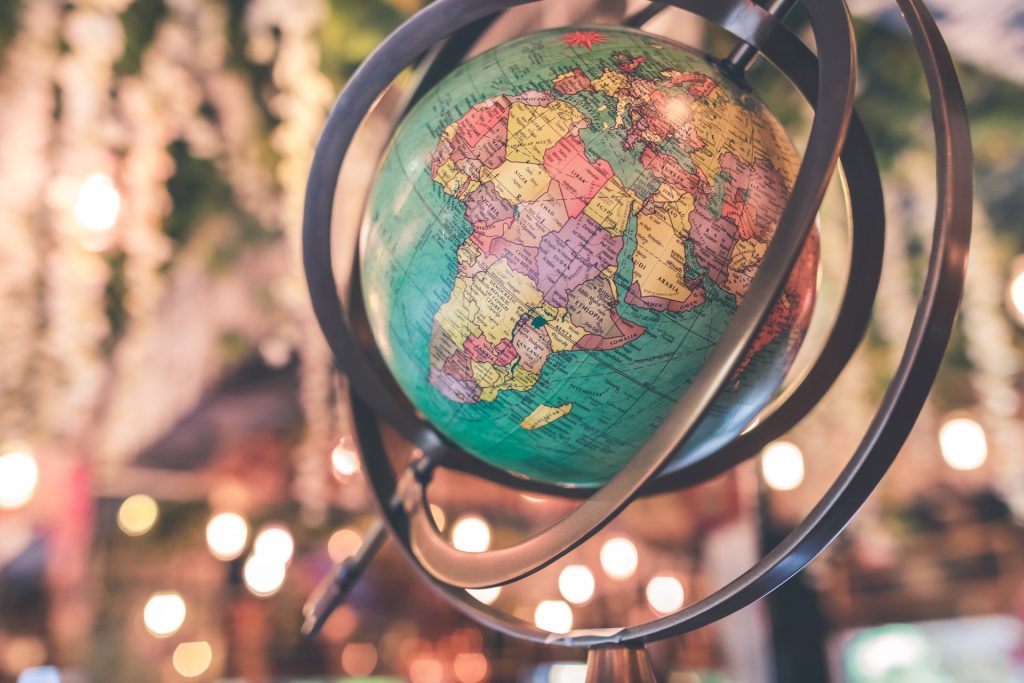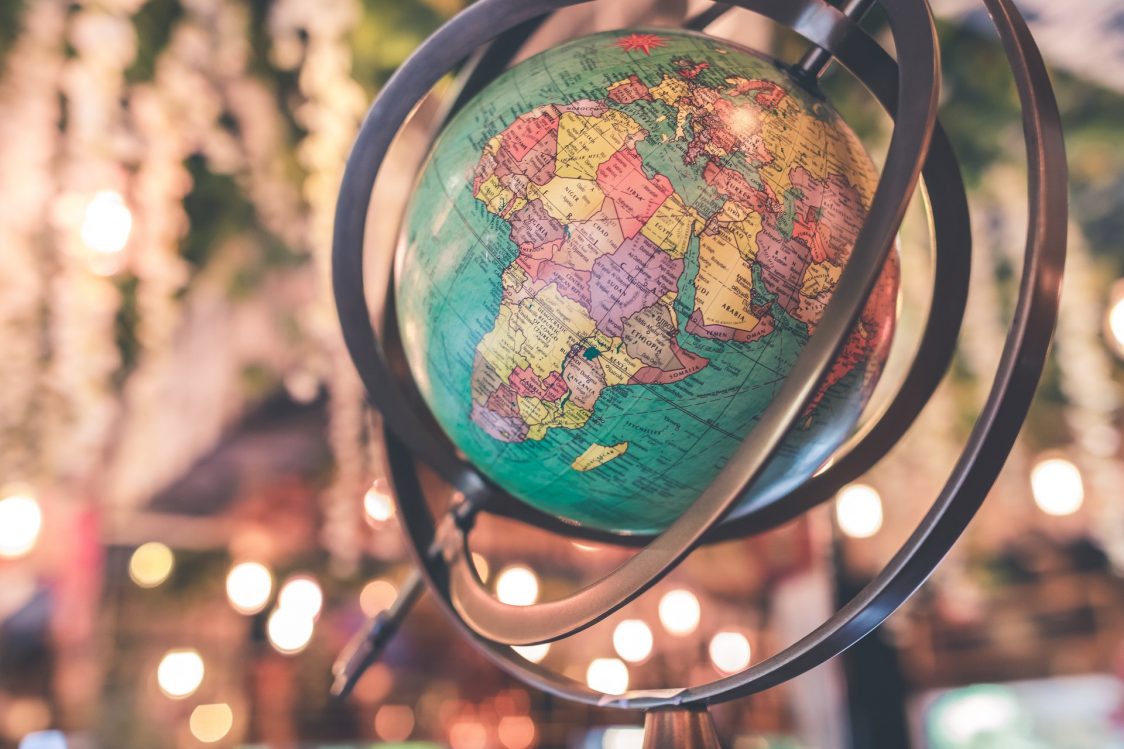By Carol Peters
Rutgers’ New Global Environmental Change Grants Provide Seed Funding to Seven Projects

How will the Amazon forest respond to a warmer climate and more frequent droughts? How can the environmental humanities, critical social sciences, law, and planetary observation creatively collaborate to reimagine effective, just, and legitimate governance for the Anthropocene?
These are just a few of the critical questions Rutgers faculty members will seek to answer as the recipients of the new Global Environmental Change Grants program, offered through a partnership between EOAS, Rutgers Global, and the Rutgers Climate Institute (RCI).
According to Rutgers Global, these new grants “aim to leverage and enhance Rutgers’ global presence and cross-disciplinary expertise to advance the understanding and/or governance of global environmental change.”
Read below to learn more about the research the grant winners will undertake this year, including research that will examine how human induced fires in the peatland forests affect wild orangutan health and the ecology of the habitats they inhabit, and the research exploring how viruses impact carbon cycling through infection and mortality of diatoms, a group of phytoplankton responsible for ~20% of oxygen on the planet.
Global Environmental Change Grants
Kristina Keating, Department of Earth and Environmental Science, School of Arts and Sciences–Newark, Rutgers University–Newark
Evaluating the Impacts of a Changing Climate on Water Storage and Water Yield in Andean Peru
The Peruvian Andes are home to 71% of the world’s tropical glaciers. As glaciers continue to recede in response to global climate change, downstream water users in this region will become vulnerable to water scarcity. Evaluating and quantifying water storage and sustainable water yield is thus a critical step in helping Peruvian communities make informed water management decisions and to meet future water demands. In this project we will perform hydrogeologic and hydrogeophysical study to understand and quantify water storage and availability in two watersheds, the Ramuschaka watershed and the Marashuaycoco watershed, in Andean Peru. The Ramuschaka and Marashuaycoco watersheds are in the punagrasslands of the Andes, which are an understudied but important non-glacier fed water source within the region.
Cymie Payne, Karen O’Neill, Pamela McElwee, Rachael Shwom, and Victoria Ramenzoni, Department of Human Ecology, School of Environmental and Biological Sciences, Rutgers University–New Brunswick
Imagining Environmental Governance Futures in the Anthropocene
How can the environmental humanities, critical social sciences, law, and planetary observation creatively collaborate to reimagine effective, just, and legitimate governance for the Anthropocene? While governance models for the uncertainties of our era can include adaptive management, risk scenario planning, multicriteria decision-making, and other approaches, critical questions still exist regarding their effectiveness, implementation, public legitimacy, and acceptability to policy makers. The Sustainability and Governance in the Anthropocene (SAGA) initiative, based in the Department of Human Ecology, aims to improve governance to planetary stewardship through the key themes: institutional architecture, decision-making under uncertainty, and visioning sustainable futures. The initiative will include a public conference, “Values and Visions: Governance for Sustainable Futures”and a workshop, “Research Needs in Global Environmental Governance and Models for Global Environmental Governance Centers,”with leaders from other governance centers in Europe, Latin America, and Asia. Through these activities SAGA will deepen and extend Rutgers’ engagement on global environmental governance.
Ying Fan Reinfelder and Caio Mattos, Department of Earth and Planetary Sciences, School of Arts and Sciences, Rutgers University–New Brunswick
Building Collaboration with Brazilian Scientists to Understand Amazon Forest Change
How will the Amazon forest respond to a warmer climate and more frequent droughts? Can forests adapt to changing environments? Can water in the deep soil sustain plants during droughts? We will answer these questions through a collaboration with Brazilian scientists, initiated by Rutgers graduate student and Brazilian native Caio Mattos. In the Amazon rainforest, we will measure how much water is stored in the deep soils and how tree roots “find” the deep water, how deep soil water storage change from hilltops to valley floors, and how the properties of the forest reflect such changes. Instead of looking at trees as separate entities, we will examine them in the context of their physical environment to understand the role played by water availability in shaping forest response to drought. Results will shed new lights on how Amazon forests obtain their water, and how they may respond to future climaticchange.
Åsa Rennermalm, Department of Geography, School of Arts and Sciences, Rutgers University–New Brunswick; Kyle Mattingly, Institute of Earth, Ocean, and Atmospheric Sciences, Rutgers University–New Brunswick; and Mark Miller, Department of Environmental Sciences, School of Environmental and Biological Sciences, Rutgers University–New Brunswick
Towards Understanding Greenland Ice Sheet Melting by Mapping Boundary Layer Properties with Unmanned Aerial Vehicle
Greenland ice sheet mass loss is one of the leading causes of the current global sea-level rise. Since 2000, the majority of the ice sheet mass loss has been caused by an increase in surface melt, controlled by a warming atmosphere. However, exactly how warm air is able to penetrate the cold air layer over the ice sheet and generate surface snow and ice melt is unresolved. Detailed measurements of the atmosphere over Greenland are extremely rare, and none occurs at the tundra-ice sheet interface. In this project, unmanned aerial vehicles (i.e. drones) will be deployed at the tundra-ice sheet interface in Southwest Greenland. Here, the project team will measure critical parameters such as the temperature, humidity, and wind speed of the near-surface atmosphere. These data will be used to assess the feasibility of using drones to collect data that can expose the processes that underlie atmosphere-ice sheet interactions.
Amy Savage, Department of Biology, College of Arts and Sciences, Rutgers University–Camden
Assessing the Resilience of Cuban Ecological Communities to Multiple Simultaneous Drivers of Anthropogenic Change
A key goal of ecology is to make accurate predictions about how populations, communities, and ecosystems will change over time. This goal is both more important and more difficult in the face of rapid, human-driven environmental change. Specific environmental changes caused by humans are both local and global in scale and often occur simultaneously, yet most studies investigate their effects in isolation. This disparity between the way that human-driven changes occur and the way that they are studied hampers our ability to make reliable predictions about how populations, communities, and ecosystems are likely to change over time. In this study, we will assess the simultaneous effects of disturbance from hurricanes and species invasions on the resilience of ant-honeydew producing insect networks. It will advance fundamental and applied ecological knowledge and lead to more accurate predictions about how diversity in the tropics will respond to local and global environmental change.
Kimberlee Thamatrakoln, Department of Marine and Coastal Sciences, School of Environmental and Biological Sciences, Rutgers University–New Brunswick
Disentangling the Biogeochemical Consequence of Algal Host-virus Interactions on Carbon Sequestration in the Gulf of Naples, Italy
Carbon cycling is arguably the most impactful process on our planet, driving ecosystem dynamics and the Earth’s climate. In the ocean, phytoplankton play a critical role in removing atmospheric carbon dioxide through sequestration. As these organisms die, their associated cellular material can be remineralized and recycled in the surface ocean or exported through sinking and lost to depth. This project will explore how viruses impact carbon cycling through infection and mortality of diatoms, a group of phytoplankton responsible for ~20% of oxygen on the planet. In the Gulf of Naples, the long-term ecological research station, MareChiara, routinely experiences spring diatom blooms, providing an opportunity to explore the temporal dynamics of host-virus interactions through bloom progression. Using chemical, biological, and omic-based measurements, we will diagnose viral infection and quantify the ecological processes that facilitate remineralization and sinking to assess the biogeochemical consequence of infection on the fate of carbon in the ocean.
Erin Vogel, Department of Anthropology, School of Arts and Sciences, Rutgers University–New Brunswick
Building On-the-Ground Conservation Infrastructure for Long-Term Monitoring of Anthropogenic Air Pollution and Its Impact on Forest Dynamics and Wild Bornean Orangutans
How do human induced fires in the peatland forests affect wild orangutan health and the ecology of the habitats they inhabit? Peatland fires in Indonesia have increased in magnitude over the past decade, resulting in increases in human population exposure to hazardous levels of smoke emissions. Adverse health effects, including heightened mortality rates in humans, have increased during peak exposure periods on an international scale. However, few attempts have been made to assess the consequences of this exposure on wildlife populations, despite the high density of endangered and endemic species in this mega-diverse country. We will monitor carbon emissions and document the impacts of smoke on the health of wild Bornean orangutans and the environment in which they live. Combining air quality monitoring with on-going assessment of forest dynamics and orangutan health, we will quantify the impact of human-induced smoke and climatic variation on local plant and wildlife populations.



